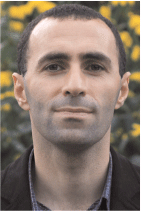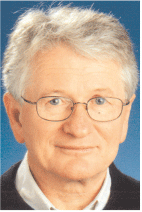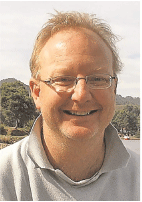Pore scale imaging and modelling of coal properties
Hamed Lamei Ramandi A , Peyman Mostaghimi A , Ryan T. Armstrong A , Christoph H. Arns A , Mohammad Saadatfar B , Rob M. Sok C , Val Pinczewski A and Mark A. Knackstedt CA The University of New South Wales.
B Australian National University.
C FEI Lithicon Digital Rock Services.
The APPEA Journal 55(2) 468-468 https://doi.org/10.1071/AJ14103
Published: 2015
Abstract
A key parameter in determining the productivity and commercial success of coal seam gas wells is the permeability of individual seams. Laboratory testing of core plugs is commonly used as an indicator of potential seam permeability. The highly heterogeneous and stress-dependent nature of coal makes laboratory measurements difficult to perform and the results difficult to interpret.
Consequently, permeability in coal is poorly understood. The permeability of coal at the core scale depends on the geometry, topology, connectivity, mineralisation and spatial distribution of the cleat system, and a better understanding of coal permeability, that and the factors that control this depends on having a better understanding and detailed characterisation of the system.
The authors used high resolution micro-focus X-ray computed tomography and 2D-3D image registration techniques to overlay tomograms of the same core plug, with and without X-ray attenuating fluids present in the pore space, with 2D scanning electron microscope images to produce detailed 3D visualisations of the geometry and topology of the cleat systems in the coal plugs. Novel filtering algorithms were used to produce segmentations that preserve cleat aperture dimensions and together with large-scale fluid flow simulations, they performed directly on the images and were used to compute porosities and permeabilities.
Image resolution and segmentation sensitivity studies are also described, which show that the core scale permeability is controlled by a small number of well-connected percolating cleats. The results of this study demonstrate the potential of simple image-based analysis techniques to provide rapid estimates of core plug permeabilities.

Hamed Lamei Ramandi is a PhD student at the School of Petroleum Engineering at the University of New South Wales. He holds an MSc in petroleum engineering from the same university and a BSc in geology from Tehran Azad University. His research interests are in micro-computed tomography imaging and characterising coal morphological properties. |

Peyman Mostaghimi is a lecturer in petroleum engineering at the University of New South Wales. Previously, he was a research associate in the Department of Earth Science and Engineering at Imperial College, London. His main research interests are in flow in porous media, pore-scale modelling and reservoir simulation. Mostaghimi holds a PhD degree in petroleum engineering from Imperial College, an MSc degree in mechanical engineering, with specialty in fluid mechanics, and dual BSc degrees in mechanical and petroleum engineering from Sharif University of Technology. |

Ryan Troy Armstrong is a lecturer in petroleum engineering at the University of New South Wales. Previously, he was a post-doctoral researcher in the rock and fluid science team at Shell Global Solutions B.V. in Rijswijk, The Netherlands. His main research interests are pore-scale multiphase flow through porous media and the application of digital rock technology. He holds a PhD in environmental engineering and a BS in biological engineering both from Oregon State University. |

Christoph H. Arns is a professor of petroleum engineering at the University of New South Wales. His main research interests are the morphological analysis of porous complex media from 3D images and numerical calculation of transport and linear elastic properties, with a focus on NMR responses and dispersive flow. Arns holds a Diploma in physics from the University of Technology Aachen, Germany, and a PhD in petroleum engineering from the University of New South Wales, Australia. Member: AMPERE, ANZMAG, DGG, SPE, SPWL. |

Mohammad Saadatfar is a researcher at the Australian National University (ANU). His research interests include cross-property correlation in porous media, granular materials, metallic foams and soft matter. Saadatfar obtained his PhD (physics) from ANU in 2006. |

Rob M. Sok is a digital core adviser at FEI Lithicon Digital Rock Services. His main areas of interest are computational chemistry and structural analysis of porous materials. Rob studied chemistry and received his PhD (1994) at the University of Groningen in The Netherlands. |

W. Val Pinczewski is a professor of petroleum engineering at the University of New South Wales. His research interests include improved oil recovery, multi-phase flow and transport properties in porous media and network modelling. Val holds BE (chemical engineering) and PhD degrees from the University of New South Wales (UNSW). |

Mark A. Knackstedt is Director Technology Development at FEI Lithicon Digital Rock Services. His work has focused on the characterisation and realistic modelling of disordered materials. His primary interests lie in modelling transport, elastic and multi-phase flow properties and development of 3D tomographic image analysis for complex materials. He was awarded a BSc in 1985 from Columbia University and a PhD in chemical engineering from Rice University in 1990. |
References
Arns, C.H., Knackstedt, M.A., Pinczewski, M.V., and Lindquist, W.B. (2001). Accurate estimation of transport properties from microtomographic images. Geophysical Research Letters 28, 3361–64.Latham, S., Varslot, T., and Sheppard, A., 2008—Image registration: enhancing and calibrating X-ray micro-CT imaging. International Symposium of the Society of Core Analysts, Abu Dhabi, UAE, October 29–November 2.
Laubach, S., and Tremain, C., 1991—Regional coal fracture patterns and coalbed methane development. The 32nd US Symposium on Rock Mechanics (USRMS), Norman, Oklahoma, 10–12 July.
Laubach, S.E., Marrett, R.A., Olson, I.E., and Scott, A.R. (1998). Characteristics and origins of coal cleat: a review. International Journal of Coal Geology 35, 175–207.
Sakellariou, A., Arns, C.H., Sheppard, A.P., Sok, R.M., Averdunk, H., Limaye, A., Jones, A.C., Senden, T.J., and Knackstedt, M.A. (2007). Developing a virtual materials laboratory. Materials Today 10, 44–51.
Sheppard, A., Latham, S., Middleton, J., Kingston, A., Myers, G., Varslot, T., Fogden, A., Sawkins, T., Cruikshank, R., Saadatfar, M., Francois, N., Arns, C., and Senden, T. (2014). Techniques in helical scanning, dynamic imaging and image segmentation for improved quantitative analysis with X-ray micro-CT. Nuclear Instruments and Methods in Physics Research Section B: Beam Interactions with Materials and Atoms 324, 49–56.
Sheppard, A.P., Sok, R.M., and Averdunk, H. (2004). Techniques for image enhancement and segmentation of tomographic images of porous materials. Physica A: Statistical Mechanics and its Applications 339, 145–51.
Su, X., Feng, Y., Chen, J., and Pan, J. (2001). The characteristics and origins of cleat in coal from Western North China. International Journal of Coal Geology 47, 51–62.
Ting, F.T.C. (1977). Origin and spacing of cleats in coal beds. Journal of Pressure Vessel Technology, Transactions of the ASME 99, 624–6.
Varslot, T., Kingston, A., Myers, G., and Sheppard, A. (2011). High-resolution helical cone-beam micro-CT with theoretically-exact reconstruction from experimental data. Medical Physics 38, 5,459–76.


